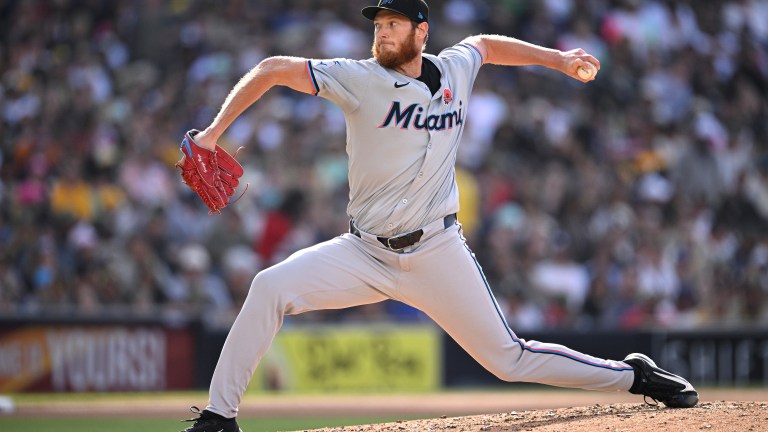How Walks are Leading These Five Teams to Losses
Today we do a deep dive into how pitchers with too many walks lead their teams to losses. Five teams in particular stand out above the rest.

Walking has never been encouraged the way it is in today’s day and age of baseball for hitters, and on the flip side, pitchers who walk more hitters are costing their teams wins.
Just one team in MLB’s bottom 10 in walk rate has a winning record, and that’s the New York Yankees, who have made up for their walks with one of the best strikeout rates and the best left-on-base percentage in baseball.
Looking at the other nine teams in the bottom 10, you’ll find a number of teams that would likely have fancied themselves more of a playoff contender than their record shows as we head into June. That includes the New York Mets, Texas Rangers, and Houston Astros, who all have underperformed expectations thus far.
Of course, there are teams on the other end of the spectrum that aren’t walking a ton of batters but still losing games, but of the four teams in the top 10 of walk rate with a losing record, only the Washington Nationals are more than two games under .500.
| Team | BB% | BB% Rank | Runs Allowed (RA) | RA Rank | Record |
| Mets | 10.6 | 30 | 285 | 24 | 24-34 |
| White Sox | 10.4 | 29 | 304 | 29 | 15-44 |
| Angels | 10.3 | 28 | 293 | 26 | 21-37 |
| Rangers | 10.2 | 27 | 256 | 15 | 28-30 |
| Astros | 10.1 | 26 | 263 | 20 | 26-33 |
While it may seem evident that walks lead to runs, not all walks are built equal. There are teams who can work around walks, be it through strikeouts, generating soft contact, or just plain sequencing luck after issuing a free pass.
But with that said, some teams just can’t seem to work around the walk, including these five who have had walks come back to bite them in different ways this season.
Miami Marlins
Walk issues: With runners on base
The Marlins rank 24th in MLB in walk rate, 9th in home runs against, 28th in runs against and 27th in left-on-base percentage.
To put it simply, Miami just hasn’t been able to strand runners once they let them on.
While that is partially due to allowing 29 home runs with runners on base, the Marlins really struggle with issuing walks with runners on base. Miami has the game’s second-highest walk rate with runners on base (11.6%) in MLB, compared to the seventh lowest (7.1%) with no one on.
Tanner Scott, Calvin Faucher, and A.J. Puk are three Marlins who have really struggled in this area, each posting a walk rate of over 18% with runners on.
The issue gets even worse for the Marlins when their pitchers have two outs and runners on, as their walk rate goes up to an MLB-worst 14.1% in those situations.
For a pitching staff that ranks in the bottom five in baseball in strikeout rate, by walking hitters when there are already runners on, Miami is trusting other teams to get themselves out, which isn’t always a great formula for keeping runs off the scoreboard.
New York Mets
Walk issues: High-leverage situations
While the Mets pitchers are just flat-out walking the most hitters in baseball, their free passes are coming at the worst time possible.
Only the Colorado Rockies have a higher walk rate than New York in high-leverage situations, and they’ve played 46 fewer innings in that scenario. In fact, no team in baseball has pitched more high-leverage innings than the Mets, which makes their 13.6% walk rate with games hanging in the balance an issue.
New York is tied with the Chicago Cubs for the most meltdowns in MLB, which is essentially when a reliever costs their team a chance to win a game. This can be traced back to the Mets’ tendency to issue walks in big spots. Their bullpen has a 13.7% walk rate in high leverage, which includes an 18.8% mark from Jake Diekman, 14.3% from Edwin Diaz, and over 25% totals from Sean Reid-Foley and Drew Smith.
Not only have the Mets led the league in walk rate in high-leverage situations but they’re also tied for the MLB lead in bases-loaded walks issued with nine, something Reid-Foley has done twice.
So yes, the Mets have the worst overall walk rate, but the fact that they crank that number up in the most important moments is costing them in the win-loss column, as well.
Houston Astros
Walk issues: Starting rotation
The Astros rank 26th in baseball in walk rate, but their starting pitchers rank last among all 30 rotations.
Of the seven pitchers to throw over 25 innings as a starter for Houston this season, only Justin Verlander and Framber Valdez have below-league-average walk rates.
So it’s perhaps no coincidence that the Astros rank 25th in baseball in earned runs allowed in the first five innings, and seventh in the seventh inning and later.
Things have actually started to turn recently for Houston starters. Since May 22, their walk rate has dropped to 7.9%, still not great, but much improved from the 11.1% mark they ran through the first seven weeks of the season. That lines up nicely with the 2.52 ERA the group has posted over the same span.
While the Astros haven’t been able to string a bunch of wins together with their walk rate — and pitching as a whole — improving, their run prevention has been great, leaving the onus on the offense to start producing in lockstep with their pitching.
Texas Rangers
Walk issues: Bullpen
While their bullpen didn’t cost them in the postseason last year, Texas surely didn’t feel confident turning the ball to anyone other than Jose Leclerc. Despite some offseason efforts to add some relief help, not much has changed in 2024.
The Rangers have the third-worst bullpen ERA and the third-worst bullpen walk rate in baseball.
One thing that has changed is the reliability of Leclerc, who owns a 5.18 ERA and got an early boot from the closer role this year. Only two Texas relievers (min. 4.0 IP) have walk rates better than the average reliever this season — Cole Winn and David Robertson.
Jose Urena, Grant Anderson, Jacob Latz, Kirby Yates, Yerry Rodriguez, Jonathan Hernandez, and Leclerc, who have all combined for 119.2 innings of relief in Texas, all have walk rates higher than 10%.
Texas’ bullpen is also among MLB’s worst in left-on-base percentage, ranking 24th as a unit, showing that — similarly to Miami’s staff as a whole — a walk issue makes it difficult to strand runners. Rangers relievers are last in walk rate with runners in scoring position, as well, which may not mean much if there is an open base, but if there are multiple runners on, the free passes only increase the odds of another run coming across.
Chicago White Sox
Walk issues: Pretty much all the time
The White Sox have the worst record in baseball, have allowed more runs than every team not named the Rockies, have issued more walks than all teams not named the Mets and rank near or at the bottom of the league in walk rate by both their starting pitchers and relievers.
Issuing walks might not actually be the largest problem so far in 2024 for White Sox pitchers. They’ve allowed a league-high 77 home runs, 36 of which have come with runners on base. Chicago has also allowed a .286 average when there are runners on and has just a 69.3% left-on-base percentage.
So it’s clear the White Sox have been having many issues this season, but it’s perhaps even more evident that they have troubles stopping runners from scoring when they do reach.
Despite all of their struggles this season, there have been some pitching wins for the White Sox. Garrett Crochet looks like a legitimate top-of-the-rotation arm, Erick Fedde has been a resounding success, and Michael Kopech and Jordan Leasure have looked like future bullpen pieces to build around.
For the rest of the staff, however, limiting some of the walks would be a step in the right direction for a team that has given up way too many free bases to begin the season.
— All stats courtesy of FanGraphs and from before play on June 2.
